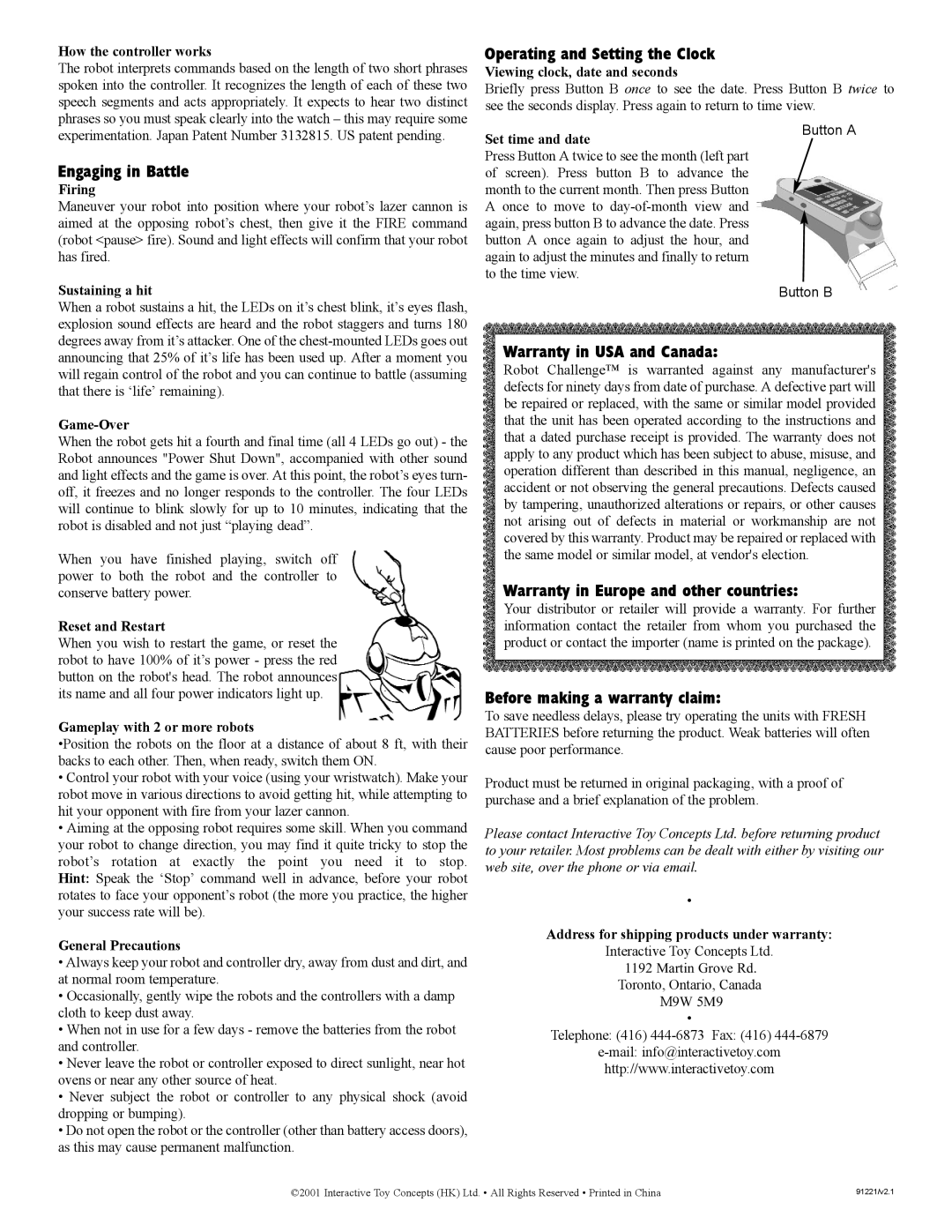Voice Command Robot Challenge specifications
The Interact-TV Voice Command Robot Challenge is a pioneering competition designed to showcase the innovative potential of robotics and artificial intelligence. This event invites participants from various backgrounds, including engineering, computer science, and robotics, to design and build robots that respond to voice commands. The challenge aims to push the boundaries of what is possible in interactive technology, fostering creativity and collaboration among participants.One of the main features of the challenge is the emphasis on natural language processing (NLP) capabilities. Competitors need to equip their robots with sophisticated algorithms that can understand and interpret human speech effectively. This involves training machine learning models using large datasets of spoken language, allowing the robots to accurately recognize and execute commands ranging from simple requests to complex instructions.
In addition to speech recognition, participants must incorporate advanced sensors and actuators into their robots. These elements enable the robots to navigate their environments, detect obstacles, and interact with physical objects. For instance, many robots utilize ultrasonic sensors for distance measurement and motors that provide precise movement, ensuring they can respond to voice commands in real-time.
The technology stack used in the Interact-TV Voice Command Robot Challenge often includes popular programming languages such as Python and C++, as well as frameworks like TensorFlow and ROS (Robot Operating System). These tools help teams develop their robot's functionality and facilitate communication between hardware components. Additionally, cloud computing technologies may be utilized to enhance processing power and enable online learning capabilities, allowing robots to improve their performance over time.
Another characteristic of the challenge is its focus on user experience. Competitors must design their robots to be intuitive and user-friendly, ensuring that people of all ages can interact with them effortlessly. This includes providing clear audible feedback, as well as designing engaging and visually appealing interfaces.
Overall, the Interact-TV Voice Command Robot Challenge represents a significant step forward in the field of robotics. By combining voice recognition, advanced sensor technology, and user-centered design, participants are pushing the envelope of what interactive robots can achieve. As the competition evolves, it promises to inspire new developments in robotics that will transform how humans and machines communicate and collaborate.

